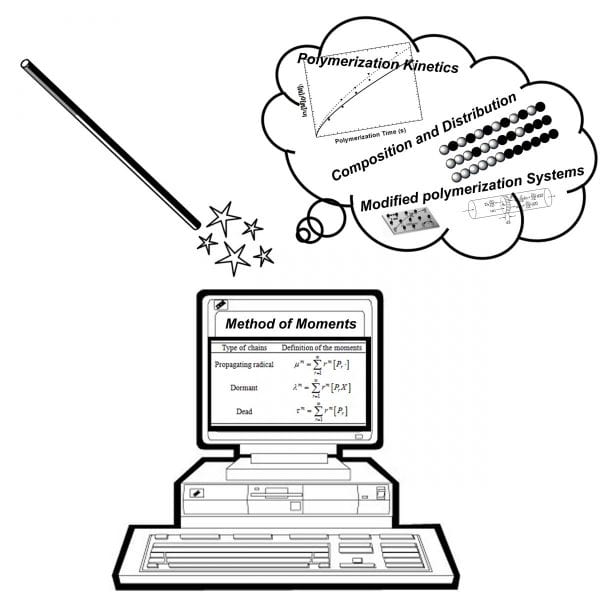Reversible-deactivation radical polymerization (RDRP) techniques have received lots of interest for the past 20 years, not only owing to their simple, mild reaction conditions and broad applicability, but also their accessibility to produce polymeric materials with well-defined structure. In recent years, modeling of RDRP systems was widely used to optimize reaction conditions, which makes these RDRP techniques more accessible for controlling polymer chain properties such as molecular weight and its distribution, copolymer composition, and copolymer sequence.
Modeling approaches are commonly divided into probabilistic and deterministic methods, where the Monte Carlo simulation is an example of probabilistic methods. This method requires knowledge of reaction probabilities in advance and is suitable for complex systems. The core of deterministic approaches (e.g., Predici software involving discrete Galerkin hp algorithm and the method of moments) is the solution of a set of mass balance equations derived from reactions. Compared with Monte Carlo simulation and Predici software, the method of moments is a relatively simple, convenient, and low-cost approach. Therefore, it is of great importance for modeling RDRP systems.
In their recent Review article, Prof. Zheng-Hong Luo and Dr. Yin-Ning Zhou from Shanghai Jiao Tong University describe the progress of modeling RDRP systems using the method of moments. The introduction of three RDRP techniques, including atom transfer radical polymerization (ATRP), nitroxide-mediated polymerization (NMP), and reversible addition-fragmentation chain transfer (RAFT) polymerization, as well as the principles and characteristics of the method of moments are given briefly. The authors in their work put special emphasis on the application of the method of moments in modeling RDRP systems, for example, the prediction of polymerization rate and average chain properties in batch reactors, the regulation of chain structure through feedstock strategy implementing in semibatch reactors, the assessment of polymerization kinetics and product properties, and the evaluation of surface initiation polymerization and crosslinking/branching systems.
The authors anticipate that these advanced models and simulation results can help researchers in promoting lab-scale research to industrial applications of RDRP techniques.


















